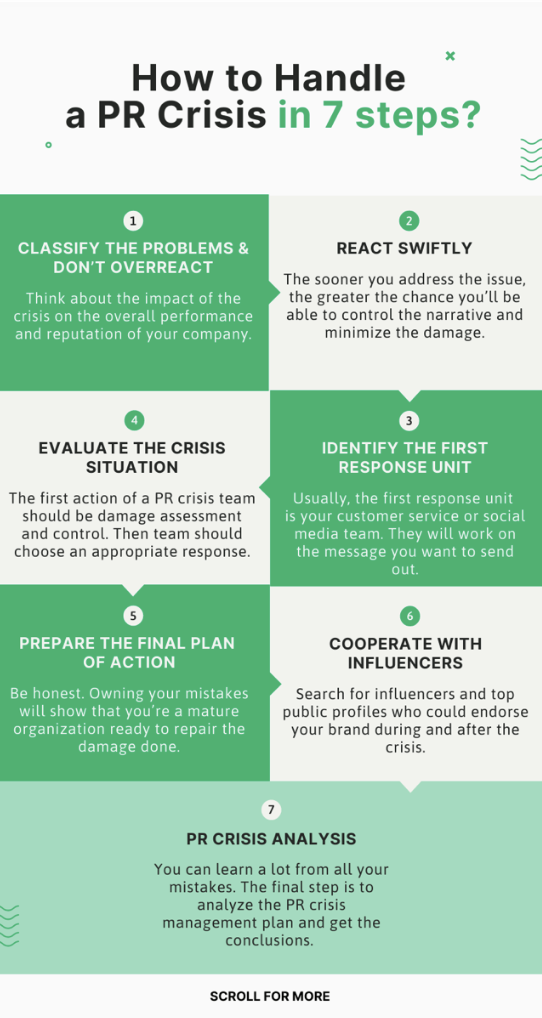Contact Center–Time to Optimize!
Two things happening are leaving people scratching their heads. Everyone is talking about a recession and the technical layoffs are now a who’s who of […]

Protect – verb – to cover or shield from exposure, injury, damage, or destruction.
It is no surprise that, as humans, we protect what is important to us. In everyday life we protect our family, friends, homes, cars, etc., but what are you protecting in your organization? The first few things that pop into most people’s heads are the building, the people, the data, the finances…. but what about your brand? Brand protection is vital to a successful organization. In our upcoming series, we will be highlighting 3 aspects of brand protection:
What are people saying about your brand?
In today’s hyperconnected world, social media has established itself as a formidable asset in crisis management for brands, big and small.
During a crisis, a brand’s stakeholders need to be kept in the loop and reassured. Clear and consistent communication helps manage expectations, address concerns and retain stakeholder trust in the brand. However, handling a crisis without hitting the panic button is easier said than done. A crisis-like situation is often accompanied by a massive influx of support inquiries, most of them from irate customers.
While providing a timely response may still be challenging, implementing a well-structured crisis communication plan can prove instrumental in appeasing your stakeholders when your products or services fall short of their expectations.
What is social media crisis communication?
Social media crisis communication refers to the act of using social media platforms such as Facebook, X, formerly Twitter or Instagram to effectively handle and respond to difficult situations or emergencies. Its purpose is to share information promptly, address real-time concerns and manage the reputation of individuals, organizations or brands during a crisis.
The primary goal of social media crisis communication is to provide accurate information swiftly, address people’s worries and ensure that they trust and comprehend the unfolding events.
However, it is vital to bear in mind that the rapid dissemination of information can also pose a drawback. There is a risk of spreading misleading information or eliciting reactions that may portray your brand as insensitive or foolish.
According to PwC’s global crisis survey, 73% of global companies admitted that a crisis negatively impacted their business.
Naturally, having a well-planned crisis communication strategy in place becomes essential as it facilitates tackling critical scenarios with effective communication.
Developing a social media crisis communication strategy ahead of time enables you to prepare calmly and thoughtfully. This approach positions you to think rationally about using your social media platforms effectively for positive outcomes.
The role of social media in crisis communication
Social media plays a vital role in crisis management as it offers a platform for real-time communication, information sharing and public engagement. Moreover, it enables organizations, individuals and authorities to quickly share accurate information, address concerns and provide updates during a crisis.
Below are some key roles that social media plays in crisis communication.
Quick information delivery
In times of crisis, it’s crucial to share accurate information promptly. Social media enables organizations, authorities and individuals to rapidly disseminate updates, announcements, and safety measures to a large audience.
Active listening and resolving issues
Social media serves as a medium between organizations and their audiences, facilitating active listening and issue resolution. This allows organizations to monitor conversations, analyze incoming issues and promptly address queries.
Direct engagement and interaction
Unlike traditional media channels, social media offers a two-way communication channel, allowing direct engagement and interaction with the public. This enables organizations to address concerns and promptly communicate accurate information. Such direct connection fosters transparency, builds trust and enhances public perception during times of crisis.
Amplifying reach and mobilizing support
Social media’s viral nature facilitates the rapid spread of information, ensuring a wider reach within seconds. During a crisis, this capability becomes invaluable in mobilizing support, whether it’s for fundraising, volunteer recruitment or sharing critical resources. Moreover, social media campaigns can quickly gain momentum, harnessing the power of collective action to assist those affected by the crisis.
Now, let’s understand how to develop a strategy for managing social media crisis communication.
How to develop a social media crisis communication strategy: action plan
It’s essential to implement a strategy before a crisis occurs. Below are some steps to consider while implementing this strategy:
Prepare in advance
A crisis can strike at any moment; therefore, it’s crucial to proactively implement strategies rather than scrambling at the last moment. Discuss potential crisis scenarios (for example, an airline crash, impacts of natural calamities or any emergency situation that requires brand communication) with the team and prepare appropriate response strategies.
Establishing empathy
During a crisis, the audience may experience tension, so organizations need to exhibit empathy by maintaining a kind and compassionate tone in their communications. It’s necessary to tailor the tone and voice of your social media posts to match the sensitivity of the situation.
Ensuring accurate updates
During a crisis, the risk of rumors is high and misleading information can spread rapidly. Therefore, it is the organization’s responsibility to communicate accurate information to their audiences. Before posting any social media content, ensure that the information is correct and verified by the team.
Plan your platforms to reach the right audience
In the event of an unfortunate or unforeseen incident, it is crucial to have a well-planned action response across specific platforms. The image below illustrates a framework for effective social media crisis management for brands.

Source
Evaluate the crisis and list all the relevant social media platforms, such as X, formerly X, formerly Twitter, Facebook, LinkedIn, etc., that will help you reach the maximum target audience. For example, in the case of flight delays or cancellations due to bad weather, airlines can communicate through their official Facebook and X, formerly Twitter pages to relay the information to the maximum number of passengers.
While responding to a crisis, teams must pause their scheduled posts to avoid distractions.
Leverage the social listening approach
During a crisis, staying updated on the situation and monitoring conversations about your brand from employees, customers and followers is crucial. You can adapt a social listening program for crisis-oriented monitoring if you already have one in place. If you don’t have such a program, it’s advisable to establish a social listening tool or strategy to gather valuable information.
Also Read: How to manage crisis communication in 2023 (+ checklist)
RISE Partner: Sprinklr
Here’s where platforms like Sprinklr can be an ideal partner for brands in crisis management. It offers advanced capabilities that help teams detect and respond to crises effectively.
Advantages of using social media for crisis communication
Using social media for crisis communications offers multiple benefits. Here are a few:
Wrapping up
Social media has become an invaluable asset for organizations in crisis management. By embracing its potential, organizations can effectively communicate, build trust and navigate through turbulent times. Incorporating social media into a comprehensive crisis management strategy empowers your organization to respond swiftly, provide accurate information and engage with stakeholders. In the event of a crisis:
By following these steps, your brand can harness the power of social media to manage crises effectively and maintain its reputation in challenging situations. For more information, please contact info@risetechadvisors.com.
*The full blog can be found here.*

Examples of successful social media crisis communication
Examining real-life examples of organizations that effectively utilize social media communication during crises can provide valuable insights. Here are a few notable case studies:

On the flipside, brands have also encountered numerous instances where they failed to take crisis communication seriously, resulting in significant damage to their reputation and business.
Also Read: How to detect PR crises in real time and proactively resolve them
Two things happening are leaving people scratching their heads. Everyone is talking about a recession and the technical layoffs are now a who’s who of […]